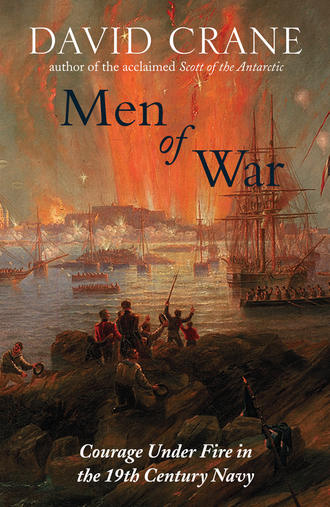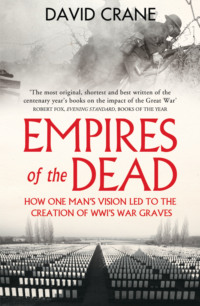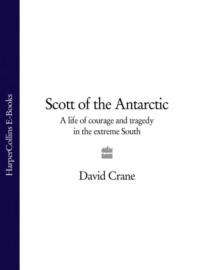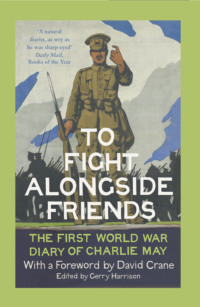
Полная версия
Men of War: The Changing Face of Heroism in the 19th Century Navy
Stewart had, in fact, been expecting far longer odds for the forty-two-gun Sea Horse, and faced with only two opposing vessels, closed on the Turkish ships until at 9.30 he was near enough to hail the Turkish commodore and demand his surrender. ‘This Captain Scandril flatly refused,’ William James, prize court judge, historian and shamelessly partisan hammer of the American navy, wrote, ‘and into the hull of the Badere-Zaffer went a whole double-shotted broadside of the Sea Horse. Nor was the Turkish frigate slow in returning the fire. In this way, with the wind a light breeze about two points abaft the starboard beam, the two frigates went off engaging; the Badere-Zaffer gradually edging away to close her consort, who was about a gun-shot distant.’
For the next half-hour the two ships manoeuvred for position, with the heavier and better-manned Badere-Zaffer attempting to board, and Stewart employing all his seamanship to fight the battle on his terms. At 10 o’clock he had again got his ship on the larboard quarter of his enemy when the Alis-Fezan interposed herself, taking from Sea Horse at a range of no more than a cable’s length a devastating starboard broadside that within ten minutes had driven her out of the action.
As the Alis-Fezan limped burning into the Aegean night, her crew decimated by the Sea Horse’s gunnery, her hull racked by explosions, Stewart turned his attention back to the Badere-Zaffer. The Turkish captain was as determined as before to exploit his overwhelming advantage in manpower, but as the two ships ran before the wind exchanging broadsides and Captain Scandril again closed to board, Stewart swung the Sea Horse across the Badere-Zaffer’s bow – losing her gaff vangs and mizzen and starboard mizzen back-stays to the enemy bowsprit as he did so – and raked her crowded forecastle with grape from his stern-chase guns as she passed.
Outsailed and outgunned as they were, the Badere-Zaffer’s crew gave place to no one when it came to courage, and the two ships continued to exchange broadsides until the Turkish cannon at last fell silent. As the Badere-Zaffer settled helpless in the water, shortly after I o’clock in the morning, her mizzen, fore and main topmasts all gone, her hull so badly shot up she could barely float, Stewart brought the Sea Horse under her stern and hailed her to surrender. A desultory fire from her after-guns was the only answer, and with one last starboard broadside, Stewart, ‘finding that his shattered opponent would neither answer nor fire, very prudently, and very humanely too, hauled off; and, after standing on a little further, brought to on the starboard tack to wait for daylight’.
It took one more broadside, and a mutiny of the Badere-Zaffer’s surviving officers – who hauled down her colours from the shattered stump of her mizzenmast while they held the half-mad Scandril in his chair – to end the engagement, but shortly after dawn it was over. ‘Sent the 1st Lieut to take possession of her,’ the Sea Horse’s log recorded, with a characteristically laconic indifference to the human drama: ‘she proved to be the Badere Zaffer a large Turkish frigate, a complement of 540 men commanded by Scandali Kichuc Ali, Captain. Her consort’s name was the Alex Fesan carrying 24 brass guns and two mortars. The enemy lost 170 killed and 200 wounded, ours 5 seamen killed [two next to Hastings when a gun blew up] & ten wounded and two dangerously.’
For all the good the Badere-Zaffer ever did the Sea Horse’s crew – the prize court refused to buy her for the navy – Scandril might as well have succeeded in a last-ditch attempt to scuttle her, but Stewart was determined to add her to the growing haul of bombards, brigs, schooners, wine, ‘senna and austrich feathers’ that he had already sent back to Malta. Over the next days her battered hull was made seaworthy enough to be towed, a skeleton crew was detained to man their prize on the voyage back to Valetta, and a Greek vessel bound for Constantinople ‘co-opted’ to repatriate their prisoners.
It was not long before the Sea Horse was following them, because with a demi-thaw in diplomatic relations between Britain and the Ottoman Empire, she was back again at Malta in September to receive on board another old friend of Sir Charles’s, Britain’s new ambassador to the Porte, Mr Robert Adair. Through the previous months the Turks had done all they could to stall negotiations, and even in a more conciliatory atmosphere it was the end of January 1809 before the ship’s company was again manning the yards to salute ‘His Excellency Mr Adair the Ambassador on his disembarking’ at Constantinople. ‘The walls of the Seraglio are like the walls of Newstead,’ another young English aristocrat, Lord Byron, on his travels with his old Cambridge friend and future philhellene John Cam Hobhouse, recorded of his first impressions of the ‘polis’,
but the ride by the walls of the city on the land side is beautiful, imagine four miles of immense triple battlements covered with Ivy, surmounted with 218 towers, and on the other side of the road Turkish burying grounds (the loveliest spots on earth) full of enormous cypresses, I have seen the ruins of Athens, of Ephesus, and Delphi, I have traversed great parts of Turkey and many other parts of Europe and some of Asia, but I never beheld a work of Nature or Art, which yielded an impression like the prospect on each side, from the Seven Towers to the End of the Golden Horn.
To a young naval midshipman like Hastings, though, it was the seaward defences of Constantinople that would have been of most interest. The captains who formed part of Sir John Duckworth’s abortive expedition were adamant that the city had been there for the taking if they had only been allowed, and over the next two months of diplomatic inactivity and interminable salutes, Hastings had all the opportunity he could want to assess those defensive frailties that were still exercising his mind twenty years later.
These were all the more obvious, too, because the Sea Horse had arrived at Constantinople at a juncture in the city’s history that was bloody even by its own violent and unstable standards. The contorted negotiations with Britain had from the first been conducted against a background of riots and rebellion, and a frenzy of beheadings, strangulations, mutilations and traditional Ottoman family planning – two hundred women of Mustafa IV’s harem were drowned in the Bosphorus – that had only paused for the murder of the Sultan and the ascent to the throne of a man to whom terror was the supreme instrument of policy.
With his jet-black beard, his great breadth of shoulder, an eye that ‘awed’ strangers and an ‘air of indescribable majesty’, as Hobhouse put it, Mahmud II had the appearance to match his character. ‘Those who know him,’ Adair’s successor as ambassador to the Porte, Sir Robert Liston, wrote of the man against whom Hastings would expend his fortune and, ultimately, his life, ‘say he had considerable abilities, a vigorous and active mind, with such an idea of the elevation, perhaps of the sanctity of his station, and so strong a feeling of personal superiority that he deems all opposition criminal, all resistance vain and ultimate disappointment on his part impossible.’
It would be intriguing to know what the young Hastings said of him, and there is no doubt that he saw him at least once. ‘Mann’d the yards and saluted the Sultan with 21 guns upon his passing the ship in his caique,’ reads the Sea Horse log for 6 March, ‘mann’d the yards and saluted the Sultan on his return.’ In its way, that glimpse was as crucial as the single, fleeting vision of Nelson from the quarterdeck of Neptune. With great swathes of the city still smouldering from the fires of the Sultan’s mutinous Janissaries, and France and Russia both threatening Ottoman integrity, Hastings could be forgiven for underestimating the man, but he would have had no trouble in recognising a natural enemy. Corrupt, despotic, violent, vulnerable, Mahmud II was everything a young Whig aristocrat could ask for. And so, too, for a born incendiary like Hastings, was Constantinople. As the Sea Horse weighed for Malta, Robert Adair’s mission accomplished, the memory of its burning suburbs, enfeebled defences and – still only a glint in the eye of even the most far-seeing naval moderniser in 1809 – its vulnerability to any ship capable of forcing the Dardanelles, left an impression that made those months among the most important of Hastings’s life.
IV
For Frank and the Sea Horse the return to Malta in the spring of 1809 meant the welcome resumption of business as usual. After her long inactivity the ship finally quitted the Dardanelles at sunset on 29 March, and by 12 April was again in Valetta where Stewart mustered the ship’s company to make ‘known to them the Lords Commissioners of the Admiralty’s approbation of their conduct in capturing the Turkish frigate’.
There was prize-money to be distributed – if not as much as they reckoned their deserts – but after three years in the Sea Horse, and growing at long last, as Stewart wrote to tell his father, it was time for the fifteen-year-old Hastings to move on. In July 1808 he had completed the requisite sea-time to be rated midshipman, and back in England Sir Charles was already mobilising old Jersey connections to secure his son’s next ship. ‘I shall be anxious to know when you have settled with Sir J. Saumarez about Frank,’ Stewart wrote to Sir Charles from Sicily in December 1809, at the end of another successful summer and autumn cruise that included two brilliant assaults on the fortresses on Isola di Giannutri and Pianosa,
as unless something particular occurs I do not propose coming home next year unless it may be late in it & I would send Frank to you in April with a discharge into Sir J’s ship which would secure his time: I have this last time at Malta given Frank a sum of money and made him buy his own clothes which by the by are now very expensive … I have now wound up all his accounts to this day & find him still £16 in my debt but he shall not draw till he finally goes as he will necessarily want some more. I have been as moderate in his expenses as I could consistent with the high price of things and his going & living like a Gentleman. He behaves exceedingly well & I like him much.
If Admiralty records are to be believed, Frank was not discharged from the Sea Horse into Victory until 6 May 1810, but between the two ships there was Willesley, a ‘delighted’ mother and a determined father to see. He ‘understood from Lady Hardy’, Sir Charles was soon writing to Warren Hastings’s son-in-law,
that you and Lady Imhoff are both intimate with the Captain of Victory, on board of whom my son Frank is to go, will you have the goodness (previous to your quitting town) to leave him a letter of recommendation to your friend. He will find it very useful when on board as thro’ the Captain’s means he may be placed under the care of some Lieut. which is what I would wish as I cannot expect Sir James Saumarez will do any more than admit him on board.
After the excitements of the Sea Horse, and the light and the colour of Sicily, the Aegean and the Dardanelles, it was a return for Frank to the dull realities of home ports and blockade duties with the Baltic Fleet. In spite of the official entry date he did not join Victory until October 1810, and he was back at Willesley again by 15 December – ‘the date of the Regency’, as Sir Charles triumphantly dated Frank’s arrival – putting his father to work to find him something more interesting than a winter’s guard duty at Spithead. ‘I have been in town for a few days in consequence of my youngest son,’ Sir Charles wrote to Warren Hastings a month later, ‘who required my exertions to place him on board a sloop of war to cruise the channel … It was his own choice to employ the few months he has to finish his time in studying that most important though very dangerous navigation.’
This was a period of feverish political expectations for the extended Hastings clan, as Lord Moira came within a whisker of forming a government, but for Frank the next two years were probably the quietest of his whole career. It is difficult to trace his exact movements during this time through the usual Admiralty records, but by the autumn of 1812, after another summer at Willesley studying with a clergyman tutor, he was again exploiting family interest to smooth over the next step in his career. ‘I am obliged to be in town the 1st week in Sept,’ Sir Charles explained to Warren Hastings, ‘on acct of my younger son, whose time of serving as a midshipman will be near expired and I must not be out of the way.’
The first great hurdle for any midshipman, ideally taken at the age of twenty after the requisite six years’ sea-time, was the demanding examination to make lieutenant. In exceptional cases – or where powerful interest could be brought to bear – the age criterion might be fudged or falsified, but even a boy as well connected as Frank would seem to have had to do it the hard way, and to wait until just after his twentieth birthday in April 1814 for his promotion.*
Hastings was on the North America station at the time – the United States had declared war on Britain two years earlier – but it was only a matter of luck that he was alive to make lieutenant at all. Sometime late in 1813 he had taken a passage out to join the sloop Atalante under the command of Frederick Hickey, and early in November, as a nineteen-year-old acting lieutenant, found himself in heavy fog off Halifax when the distant sounds of a frigate’s cannon were mistaken for the signal guns at the lighthouse on Sambro Island.
There was often clearer weather close in to shore at Halifax, and with lookouts posted on the bowsprit-end and jib boom, a leadsman in the chains taking constant soundings, and her signal guns firing every quarter-hour, the Atalante nudged under easy sail into the thickening fog. For forty-five minutes Hickey coaxed her towards the safety of harbour, and with the guns of Sambro Island – as he still fondly imagined them – silent, and the leadsman reporting nothing at twenty fathoms, had just begun to think his ship clear of danger when there was a sudden warning cry of ‘Starboard the helm!’ and the Atalante was in breakers. In a matter of minutes ‘the rudder, the stern-post and part of the keel’ had been ripped away by the rocks of the Eastern Shelf off Sambro Island, Hickey reported at his court martial, ‘and perceiving immediately that there was no hope of saving the ship, my whole attention was turned to saving the lives of my valuable crew; to effect which, I directed, in the first place, the quarter boats to be lowered, and the jolly boat to be launched from the poop. I had also given directions for the guns to be thrown overboard; but the ship filled before any of them could be cut loose.’
There was just time to fire off a distress signal from the guns still above the water, and to order his men to the exposed larboard side of the ship, when with a crash of masts, the Atalante broke into three. ‘In twelve minutes she was literally torn to pieces,’ Jeremiah O’Sullivan, a passenger on board recalled, as the crew fought against the crashing breakers to get to the ship’s pinnace, tangled up helplessly in the wreck of the Atalante’s booms, ‘… and to see so many poor souls struggling for life, some naked, others on spars, casks, or anything tenable was a scene painful beyond description.’
One of their boats had already gone down – not to mention Hastings’s sea chest with all his possessions and papers – and with some sixty of the crew struggling to get into the pinnace, it seemed only a matter of moments before most of them went the same way. It was rapidly obvious to Hickey that not all of them could possibly escape in her, and ordering twenty or thirty of them out onto the booms, he succeeded in freeing her from the wreckage and – ‘in a most miraculous manner’ – launching her to safety.
With the pinnace freed there was one last, desperate attempt to lash the booms into a makeshift raft, but almost immediately they began to drift into still heavier breakers. ‘I signalled to the small boats to come near us,’ Hickey continued his evidence,
and each to take in a few more men, distributing them with each other and the pinnace till I succeeded in getting every man and boy off the raft, when, with three cheers, the wreck was abandoned. After pulling near two hours without seeing the land, guided only by a small dial compass, which one of the quartermasters had in his pocket, we picked up a fisherman, who piloted the boat safe into Portuguese cove … It now becomes a pleasing task to me to state in the fullest manner that the conduct of my officers and ship’s company, under the most trying circumstances in which human beings could be placed, was orderly, obedient and respectful, to the last extremity.
The loss of the Atalante probably had as much to do with her seaworthiness as anything else, and if Hastings was lucky to get away with his life and reputation – Hickey and his officers were honourably acquitted of all blame at the court martial – it was an omen of things to come. For the first seven years of his naval career he had known nothing but success, but over these next two he was to see the other side of his profession and learn the lessons of defeat in a war that exposed inadequacies in the Royal Navy that twenty years of almost seamless triumph had successfully masked.
There were any number of issues that lay behind the War of 1812 – the right to search and impressment, republican sympathies, Yankee designs on British Canada, mutual dislike – but at the heart of the struggle lay the system of economic warfare between Napoleonic France and Britain that threatened American merchant interests. In 1806 Napoleon had promulgated the first of his decrees designed to cripple British trade, and when Britain retaliated with her own Orders in Council that effectively closed Continental ports to neutral shipping there were inevitably a thousand potential flashpoints for war. ‘With respect to America,’ Stewart had written prophetically to Sir Charles Hastings in 1808,
we may possibly by concessions put off the evil day but the arrogance, highhandedness & I may say ungentlemanlike conduct of that nation will sooner or later force us to quarrel with them; we have always put up with things from them we would not have suffered from any other nation in the world, many instances of which I saw in the last war, & our forbearance only increases the insolence of the mob, which seems to me the only real government in that country.
None of this can disguise what a ‘bad’ war the War of 1812 was, but to an ambitious young naval officer there is no such thing, and within weeks of the Atalante going down Hastings was lucky enough to join the newly commissioned Anaconda under the command of the twenty-eight-year-old George Westphal. There had been nothing wrong with Hickey – except that he seems to have been a permanently unlucky officer – but of all Frank’s captains George Westphal, a protégé of the Duke of Kent and scion of an aristocratic German family of Hastingsesque antiquity, was by some margin the most remarkable.
As a young midshipman at Trafalgar he had lain next to the dying Nelson in the cockpit of Victory, and that was just the first and most romantic of his battle honours. In 1807 he had again been severely wounded and was captured after a long and bloody action, but making his escape in an open boat from a Guadeloupe prison ship, had worked his way back to England – courtesy of an American merchantman and an English privateer – in time to join in the reduction of Martinique and to take a prominent and heroic part in the attack on Flushing.
Fleet actions, espionage, ship-to-ship, siege work, land skirmishes, Westphal had fought in over a hundred engagements in all, and had continued in the same vein on American soil. ‘On first landing,’ a contemporary biography recorded one typical incident,
Mr Westphal, having dismounted an American officer, set off on the captured horse in pursuit of the fugitives; forgetting, in the ardour of the moment, that it was not possible for his men to keep pace with him – a circumstance indeed that did not present itself to him until he found himself, unsupported, in the midst of a body of armed men. Firing his pistols right and left, however, and slashing his sword in all directions, he dashed through them and succeeded, although wounded by a shot through the hand, in effecting his escape, bearing away with him at the same time as his prisoner a Captain in the militia.
Hastings’s new posting was doubly fortunate for him, because it was not as if the navy’s performance against the Americans had been of a kind that would guarantee him a ship like the Anaconda, or a captain like George Westphal. For the previous decade the service had exercised a virtual mastery over its European enemies, but when in the first year of war English ships had taken on more heavily armed enemies with crews – as often as not British and Irish – of more or less equal skill, the result had been a series of defeats that became an equally fertile source of American myth-making and British soul-searching.
At the heart of the British performance – when all the socio-moral nonsense about Republican Virtue and New World Vigour is forgotten – were failures in long-range gunnery, and it was this that turned Hastings into the impassioned evangelist of gunnery reform he became. After twenty wearing years of warfare there were clearly other factors at work, but in a service in which ‘any knowledge … of gunnery [was] obtained gratuitously’, as Hastings – precursor to all those prophets of gunnery change who would cry in the naval wilderness over the next hundred years – contemptuously put it, ‘all the Seaman’s help in the world will avail little, if your artillery practice is inferior to the enemy’.
The war at sea had been largely turned around by the time Hastings joined the Anaconda, but though he got his fair share of prizes there was still one more brutal lesson before he could quit America. In the first twelve months after he had joined Westphal and the Anaconda he was principally engaged in the West Indies and the Gulf of Mexico, and as the conflict ground to its inevitable and pointless conclusion – the status quo ante, with no gains and no concessions on either side – he found himself at anchor with the main British fleet off the Louisiana coast in support of Britain’s last punitive effort of the war.
If anything can epitomise the uselessness of the conflict, it is the Battle of New Orleans, fought at the beginning of January 1815, two weeks after the peace treaty had been signed at Ghent. For some months before this the opposition to war had been growing in Britain, but the abdication of Napoleon had given the government a belated opportunity to send out an army of Peninsular veterans under the command of Wellington’s brother-in-law, Sir Edward Pakenham, to strengthen its position at the negotiating table.
In the middle of December 1814 the navy began to ferry the army to its advance base on the Île de Poix in Lake Borgne, but from the start the operation was bedevilled by delays – Pakenham had not even arrived – logistical shortages, command failures and overconfidence. After the pusillanimous American performance before Washington that last was at least understandable, yet as so often it was only the courage and endurance of the army’s rank and file that redeemed a battle plan which condemned them to a sixty-mile slog across lake, bayou, bank, shoal, swamp and the mud of a half-cut canal in some of the filthiest weather Louisiana could throw at them.
It had never occurred to Andrew Jackson, in command of New Orleans’s defence, that an attack could come from this quarter, but by December the British army and commander were at last united on a narrow strip of firm ground between the Mississippi on their left flank and a cypress swamp on their right, just seven miles downriver from New Orleans. ‘In the endeavours to place the small vessels of war as near as possible to the point of landing,’ Sir Alexander Cochrane, the Commander-in-Chief, wrote of the Anaconda’s role in the operation,







